The Economics and Statistics Division maintains archives of previous publications for accountability purposes, but makes no updates to keep these documents current with the latest data revisions from Statistics Canada. As a result, information in older documents may not be accurate. Please exercise caution when referring to older documents. For the latest information and historical data, please contact the individual listed to the right.
<--- Return to Archive
For additional information relating to this article, please contact:
October 11, 2018JOB VACANCIES AND WAGES, 2018Q2 Statistics Canada has released its quarterly job vacancy and wage survey (unadjusted for seasonality) for the second quarter of 2018. This data provides insight into what portion of jobs in a particular region, sector or occupation are vacant. It also provides information on the wages offered and specific requirements for each type of vacant job. A higher job vacancy rate indicates a tighter labour market where it is more difficult for employers to find suitable candidates for the positions offered. A lower job vacancy rate signals labour market slack and potentially more job seekers competing for each vacant position.
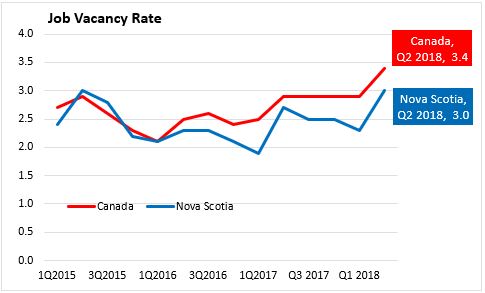
Nova Scotia's job vacancy rate was 3.0 per cent in the second quarter of 2018, representing 11,910 job vacancies. This is higher than the 2.7 per cent vacancy rate observed in the second quarter of 2017. The national job vacancy rate was 3.4 per cent, up from 2.9 per cent in the second quarter of 2017. The average wage offered for a vacant position in 2018Q2 was $17.00 per hour in Nova Scotia, up from $16.10 in 2017Q2. The national average increased by $1.15 to $20.65 in year over year terms.
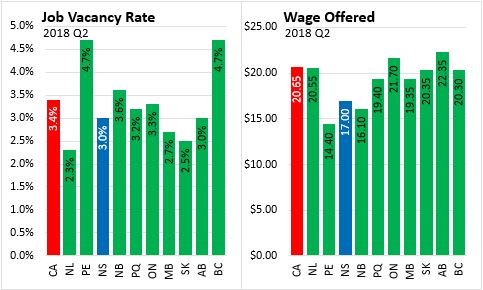
Compared to the second quarter of 2017, the vacancy rate increased in all provinces. The largest increase was in Prince Edward Island (+1.0 percentage points), followed by Quebec (+0.8 percentage points). Quebec, Prince Edward Island and British Columbia saw the largest increases (in percentage terms) in the number of job vacancies in the second quarter of 2018 compared to the same quarter in 2017. The average wage offered for vacant positions rose in all provinces except Prince Edward Island and New Brunswick, where it declined. The largest increase compared to 2017Q2 was in Ontario (+$1.90).
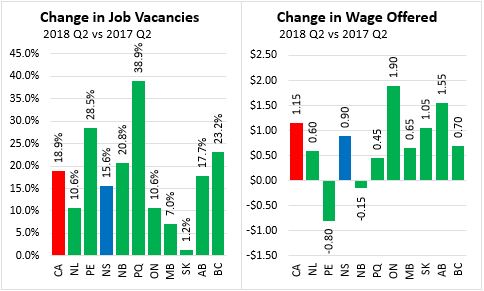
Among Nova Scotia's economic regions, the job vacancy rates were highest in Halifax and lowest in the North Shore region. The average wages offered for vacant positions were highest in Halifax and lowest in the Annapolis Valley.
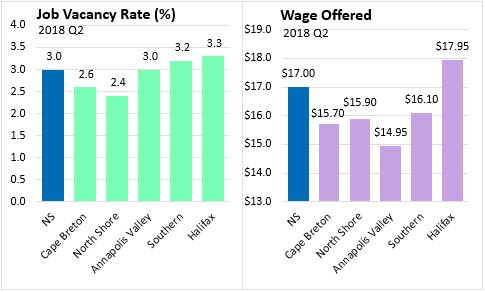
Across sectors, Nova Scotia's job vacancy rates were lower than the national average in every category except finance and insurance, real estate, health care and social assistance, and arts, entertainment and recreation in the second quarter of 2018. Compared to the national average, the wages offered for vacant positions in Nova Scotia were lower for every category. Note that suppressed data is labeled as 'N/A'.

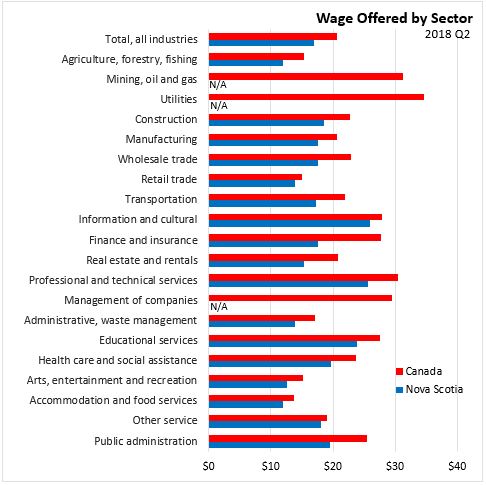
Of the 11,910 job vacancies reported in Nova Scotia during the second quarter of 2018, 36.3 per cent were in sales and service occupations. The wages offered for vacant Nova Scotia occupations were lower than the national average in every occupational category for which data were available.
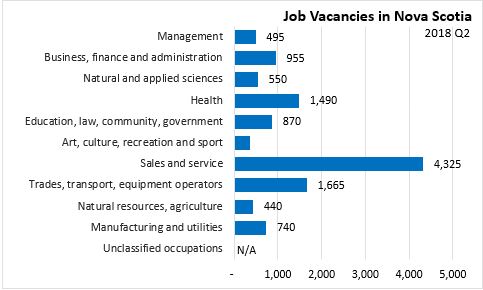
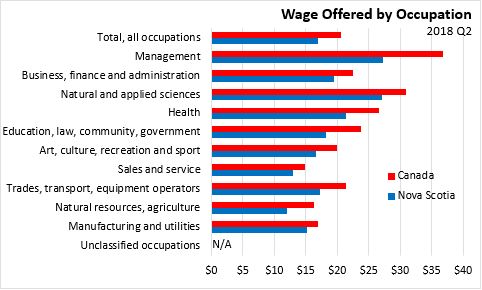
Nearly two-thirds of vacant positions in Nova Scotia during the second quarter of 2018 required high school or lower levels of education. The wages offered for these positions were lower than for those requiring more education. The highest wages were offered for those with university education beyond a bachelor's level, which had the smallest number of vacancies.
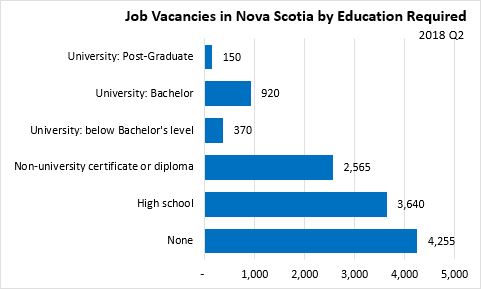
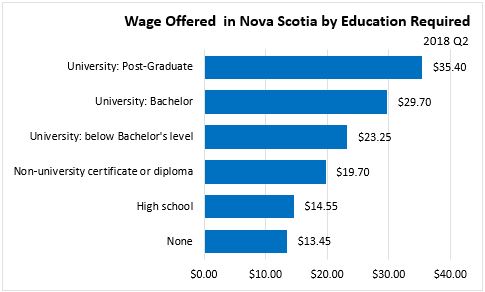
Most vacant positions had required less than one year of experience. Those vacant positions also offered lower wages compared to those with higher experience requirements. Vacancies requiring 8 or more years of experience represented only 100 vacancies in the second quarter, offering the highest average wage.
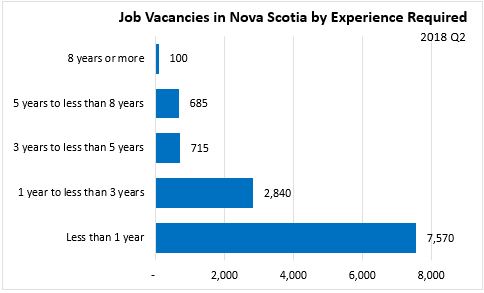
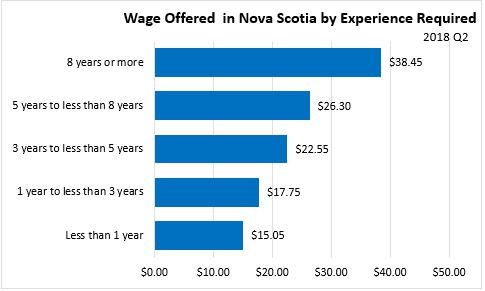
JVWS data are not seasonally adjusted. Therefore, quarter-to-quarter comparisons should be interpreted with caution as they may reflect seasonal movements.
Note: The data referenced above is from the quarterly Job Vacancy and Wages survey (JVWS). Statistics Canada also publishes monthly job vacancy data in from the Job Vacancy Statistics (JVS) component of the Survey of Payroll Employment and Hours. Due to differences in the target population and sample sizes, the job vacancies reported in the JVWS tend to be higher than those reported in the JVS.
Statistics Canada: CANSIM tables 14-10-0325-01, 14-10-0326-01, 14-10-0356-01, and 14-10-0328-01
<--- Return to Archive